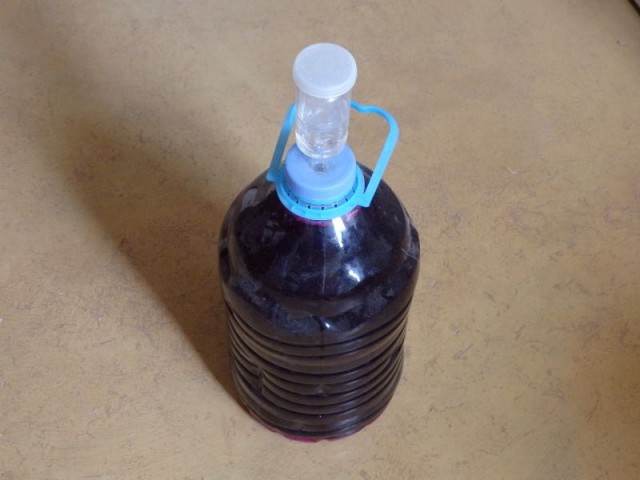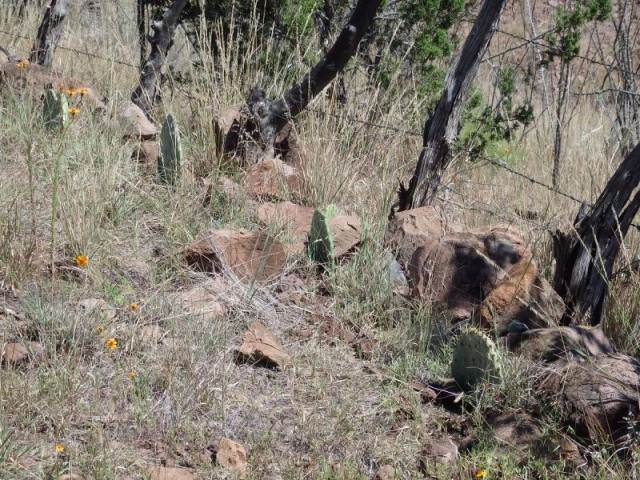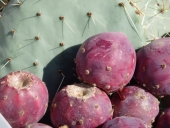




The first time I cooked it when I was a kid I expected to have to strain it
through an old cloth but I discovered that apparently the glochids dissolve
when the juice is simmered because they had completely disappeared.
Buy Our Book! Food Web: Concept - Raising Food the Right Way. Learn make more food with less inputs
Off Grid Homesteading - latest updates and projects from our off grid homestead




Buy Our Book! Food Web: Concept - Raising Food the Right Way. Learn make more food with less inputs
Off Grid Homesteading - latest updates and projects from our off grid homestead








Jenna Ferresty wrote:Does anyone know how far north they will overwinter and produce fruit?
Buy Our Book! Food Web: Concept - Raising Food the Right Way. Learn make more food with less inputs
Off Grid Homesteading - latest updates and projects from our off grid homestead




Buy Our Book! Food Web: Concept - Raising Food the Right Way. Learn make more food with less inputs
Off Grid Homesteading - latest updates and projects from our off grid homestead
 1
1








Deb Rebel wrote:Abe Connally, thank you for the grafting link. Seriously, thank you.
Buy Our Book! Food Web: Concept - Raising Food the Right Way. Learn make more food with less inputs
Off Grid Homesteading - latest updates and projects from our off grid homestead
 2
2




 1
1




 2
2








Abe Connally wrote:
Jenna Ferresty wrote:Does anyone know how far north they will overwinter and produce fruit?
I've read that some species survive in Canada.
Follow some of my adventures in writing here and pick up my cookbook/guide to radio drama Box 13 here
 1
1




Vera Stewart wrote:
I'm glad to learn about the trick of boiling the heck out of the cactus to avoid having to deal with the spines!
Buy Our Book! Food Web: Concept - Raising Food the Right Way. Learn make more food with less inputs
Off Grid Homesteading - latest updates and projects from our off grid homestead
 3
3








Growing up*Kenneth Thompson wrote:Growing around the stuff here in South Texas, I have noticed a few things after a big thicket of the stuff was cleared out. For one, You never actually clear it out completely without ripping the soil repeatedly and deeply; The prickly pear down here have deep root systems, as well as very wide, vast shallow roots. The soil underneath them is loose and very aeriated and after the first few inches of top soil, there's always a slight dampness-even during long drought periods. Taking that into account, the PP could be good to plant edibles next to; I'll have to try it out. It's a wonder that I have never thought about it until now-just have to watch the thorns come harvest time!




Kenneth Thompson wrote:The prickly pear down here have deep root systems, as well as very wide, vast shallow roots. The soil underneath them is loose and very aeriated and after the first few inches of top soil, there's always a slight dampness-even during long drought periods.
Zone 9b
 2
2








 1
1




 1
1




 1
1
















Tyler Ludens wrote:
Abe Connally wrote:
I am very familiar with Sotol, and we used the dried stalks for making shade structures and things. You can also train them as they grow to make really neat curved sticks.
But, I had no idea you could eat them. How do they taste, Tyler?
They taste blandly plant-like, certainly nothing to write home about, and they take a long time to cook. Native folks baked them in pits, but we moderns could use slow-cookers or solar ovens. I like to grow them as a potential serious famine food, as they look nothing like food to the average person. But as a day to day staple, they are not a good choice, given other easier, tastier options.




 1
1




Jason Machin wrote:tips
1. bring a flame thrower when you harvest
-they have tiny fibers and you'll be itchy for weeks
-burn the suckers
2. process them quickly after harvest
-when you remove the fruit the fleshy inside is exposed
-doesn't keep long

Buy Our Book! Food Web: Concept - Raising Food the Right Way. Learn make more food with less inputs
Off Grid Homesteading - latest updates and projects from our off grid homestead
 1
1




 2
2









Buy Our Book! Food Web: Concept - Raising Food the Right Way. Learn make more food with less inputs
Off Grid Homesteading - latest updates and projects from our off grid homestead
 1
1




Abe Connally wrote:
Jenna Ferresty wrote:Does anyone know how far north they will overwinter and produce fruit?
I've read that some species survive in Canada.


When the wind changes direction adjust your sails.





 1
1




Permaculture and Homestead Blogging on the Traditional Catholic Homestead in Idaho! Jump to popular topics here: Propagating Morels!, Continuous Brew Kombucha!, and The Perfect Homestead Cow!
 1
1




 3
3









"Always remember to never forget..."




 I stuck them inside a hoophouse in December (though we'd already had some frost), and I've ignored them until today, when some wind blew the plastic off of the hoophouse. They are all shriveled, almost rotten looking. Also, from reading some posts online about prickly pears in the winter, I should have put them into some sandy/rocky soil that would drain well, though they were pots, so not really subject to getting waterlogged due to being under the plastic.
I stuck them inside a hoophouse in December (though we'd already had some frost), and I've ignored them until today, when some wind blew the plastic off of the hoophouse. They are all shriveled, almost rotten looking. Also, from reading some posts online about prickly pears in the winter, I should have put them into some sandy/rocky soil that would drain well, though they were pots, so not really subject to getting waterlogged due to being under the plastic.



Peter Heffernan wrote:Beware!
Prickly Pear rendered 58 MILLION ACRES UTTERLY UNUSABLE in Australia in the early 19th century, because birds so quickly spread seads everywhere!
Be very careful not to make the solution into THE PROBLEM!
"When you want to climb a tree you don't begin at the top"




Andrew Ray wrote: I suppose this might be the one plant the goats won't be able to destroy...
One question-- I assume that these can tolerate severe cold? Our worst winters can go to -25C, those usually just -10C.
Xisca - pics! Dry subtropical Mediterranean - My project
However loud I tell it, this is never a truth, only my experience...




Tyler Ludens wrote:I've not tried rooting the pads that you can sometimes find at the grocery, but you might try that.
Xisca - pics! Dry subtropical Mediterranean - My project
However loud I tell it, this is never a truth, only my experience...




Buy Our Book! Food Web: Concept - Raising Food the Right Way. Learn make more food with less inputs
Off Grid Homesteading - latest updates and projects from our off grid homestead




Idle dreamer




Tyler Ludens wrote:That must be the kind we have, because ours are very hardy.
Buy Our Book! Food Web: Concept - Raising Food the Right Way. Learn make more food with less inputs
Off Grid Homesteading - latest updates and projects from our off grid homestead

|
My name is Inigo Montoya, you killed my father, prepare to read a tiny ad:
The new gardening playing cards kickstarter is now live!
https://www.kickstarter.com/projects/paulwheaton/garden-cards
|




